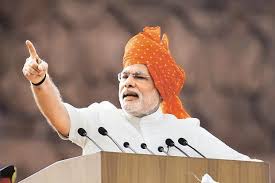RBI Ceases Printing of ₹2, ₹5, and ₹2000 Notes Amidst Currency Reforms and Digital Payment Surge
In a significant move reflecting India’s evolving monetary landscape, the Reserve Bank of India (RBI) has announced the cessation of printing ₹2, ₹5, and ₹2000 denomination banknotes. This decision aligns with the RBI’s broader strategy to streamline currency management and bolster the nation’s digital payment infrastructure.
Understanding the Decision
Withdrawal of ₹2000 Notes
Introduced in 2016 to swiftly replenish currency post-demonetization, the ₹2000 note was intended as a temporary measure. The RBI halted its printing in 2018-19, citing limited usage in daily transactions and concerns over hoarding. By May 2023, the RBI officially announced the withdrawal of ₹2000 notes from circulation, though they remained legal tender.
As of March 31, 2025, approximately 98.21% of the ₹3.56 lakh crore worth of ₹2000 notes had been returned to the banking system, leaving only ₹6,366 crore in circulation .
Phasing Out ₹2 and ₹5 Notes
The discontinuation of ₹2 and ₹5 notes is attributed to their diminished usage and the increasing preference for coins of equivalent denominations. Coins offer greater durability and cost-effectiveness, making them a pragmatic choice for lower denominations.
Implications for the Economy
Enhanced Currency Management
The RBI’s decision is part of a broader initiative to modernize India’s currency system. By reducing the number of denominations and focusing on more frequently used notes and coins, the central bank aims to simplify cash handling and reduce costs associated with printing and distributing currency.
Boost to Digital Payments
This move coincides with a significant surge in digital transactions across the country. The Unified Payments Interface (UPI) and other digital payment platforms have seen exponential growth, reflecting a shift in consumer behavior towards cashless transactions.
The RBI’s annual report highlights a 334% increase in the circulation value of the digital rupee (e₹) in FY25, underscoring the growing acceptance of digital currencies.
Public Response and Future Outlook
While the withdrawal of ₹2000 notes raised initial concerns reminiscent of the 2016 demonetization, the RBI’s phased approach and clear communication have mitigated public anxiety. The continued legal tender status of these notes ensures a smooth transition.
Looking ahead, the RBI’s focus remains on promoting digital payments and enhancing the efficiency of the financial system. The central bank is actively exploring innovations such as the Central Bank Digital Currency (CBDC) to further this agenda.
Conclusion
The RBI’s decision to cease printing ₹2, ₹5, and ₹2000 notes marks a pivotal step in India’s journey towards a more streamlined and digitalized economy. By aligning currency management with contemporary economic needs and technological advancements, the central bank is laying the groundwork for a resilient and inclusive financial future.




